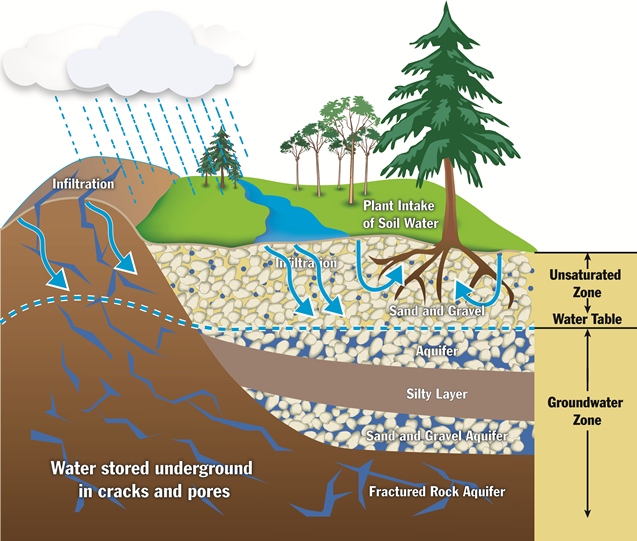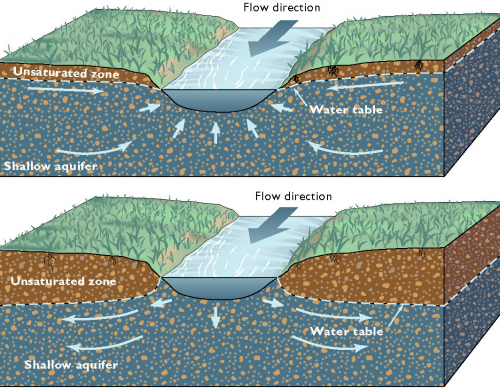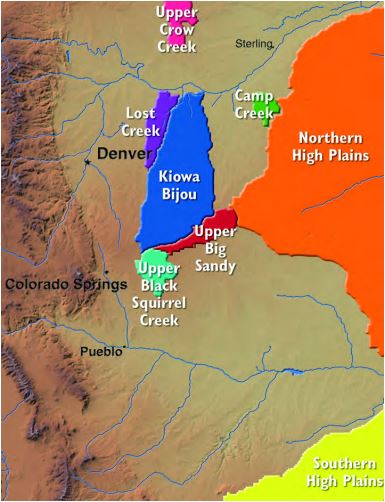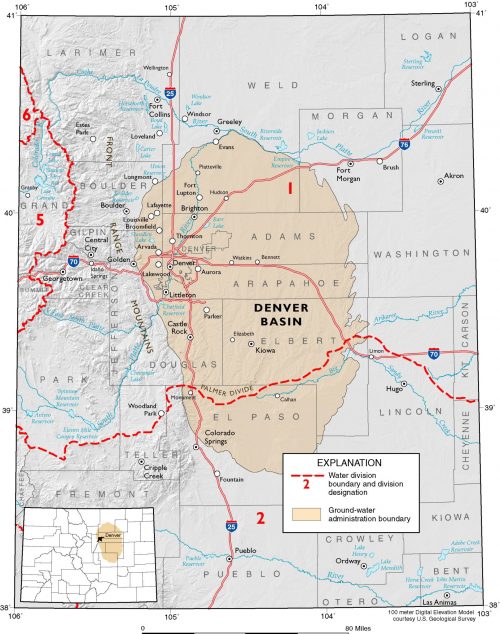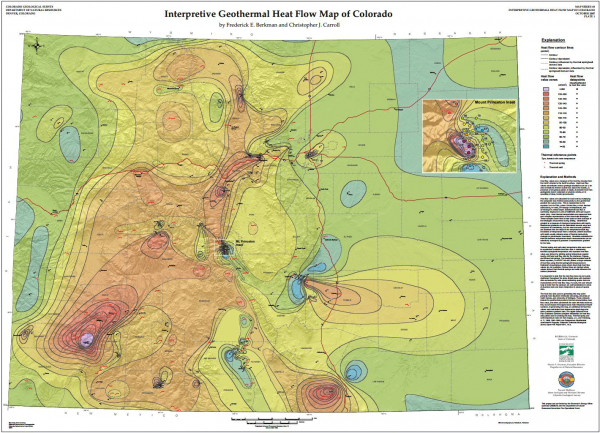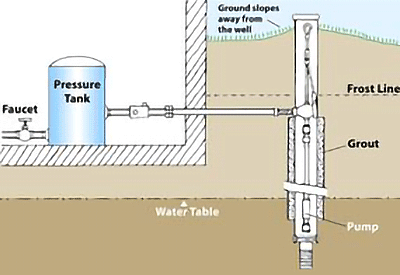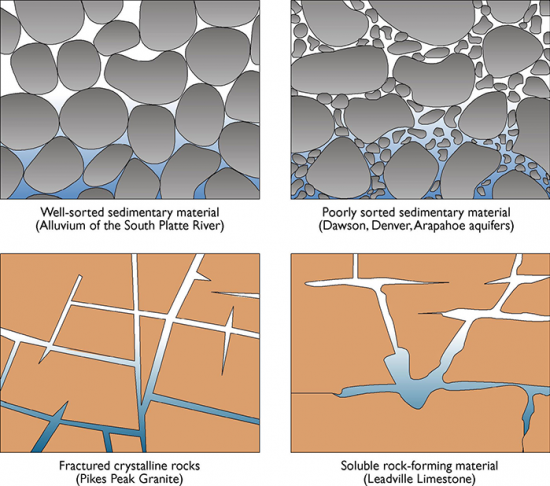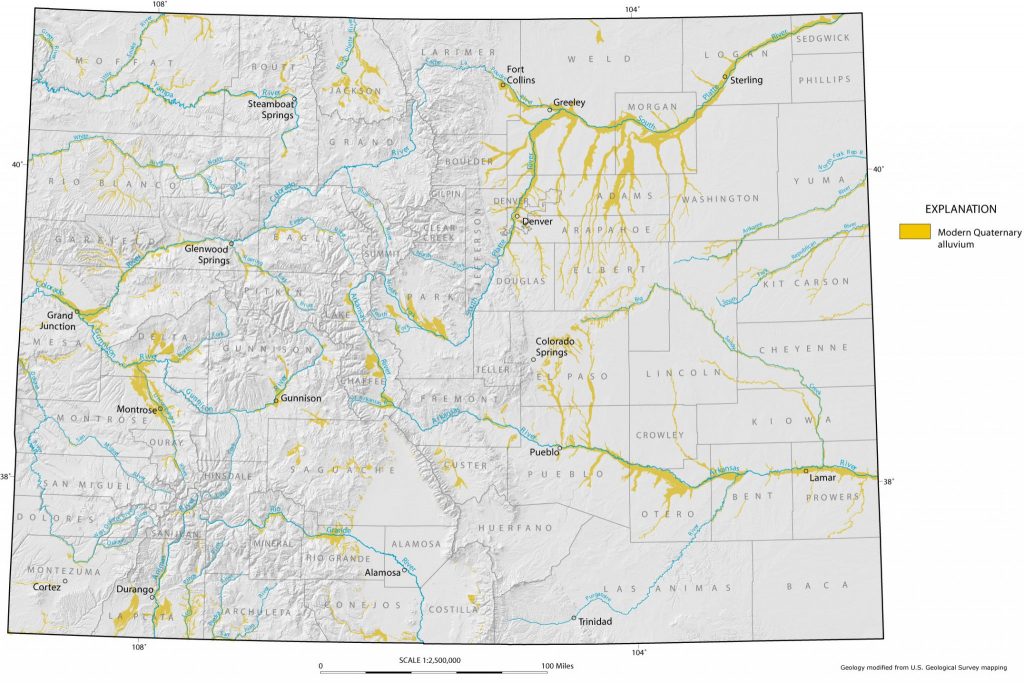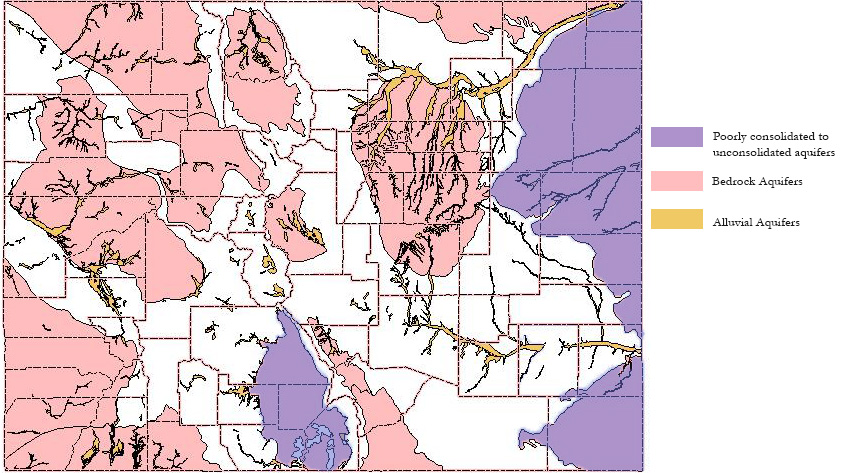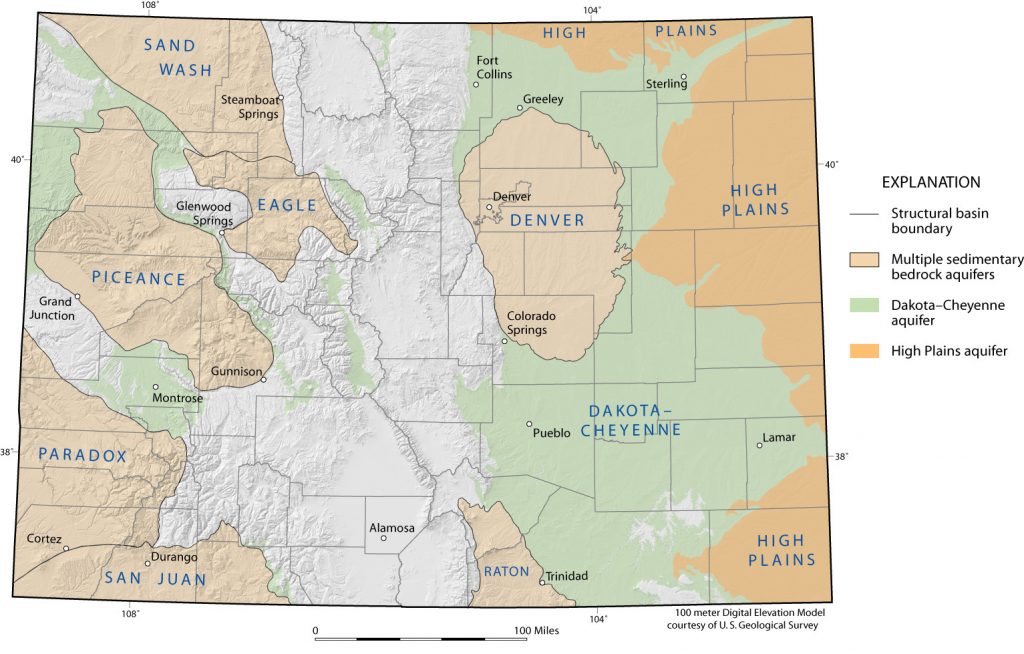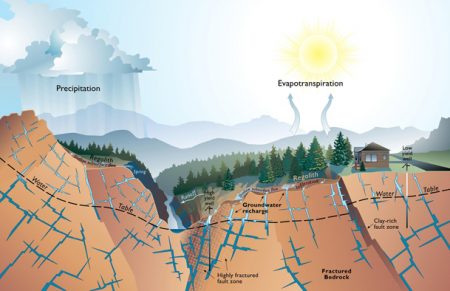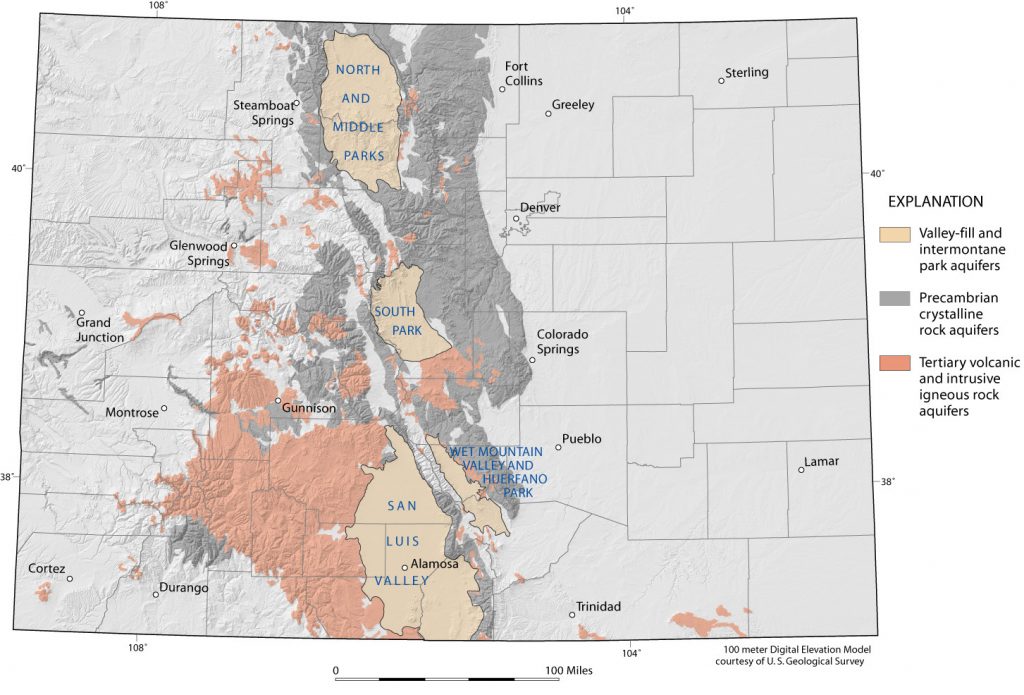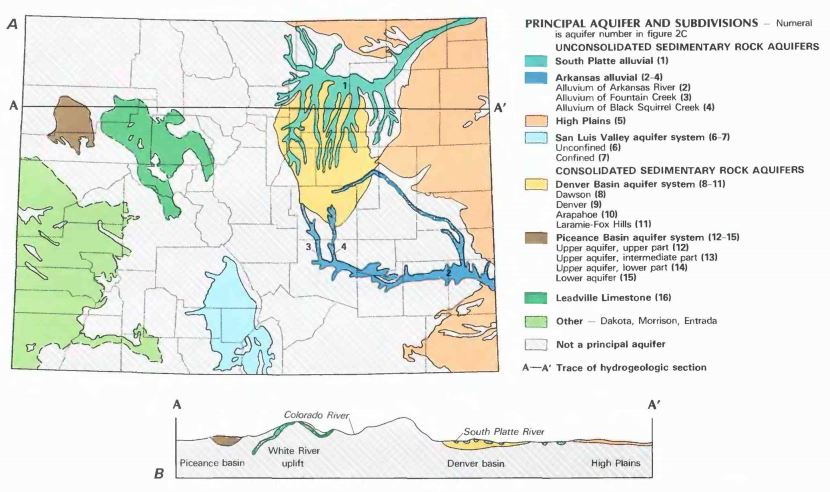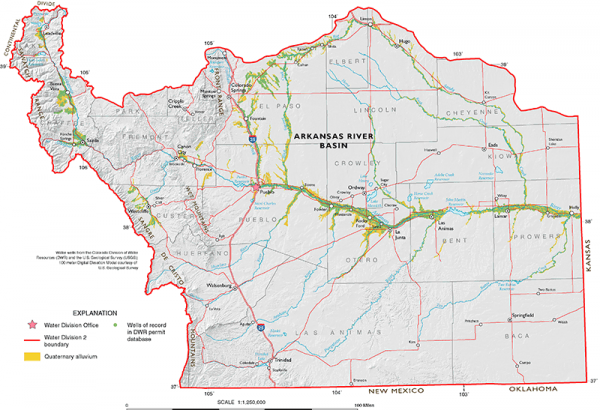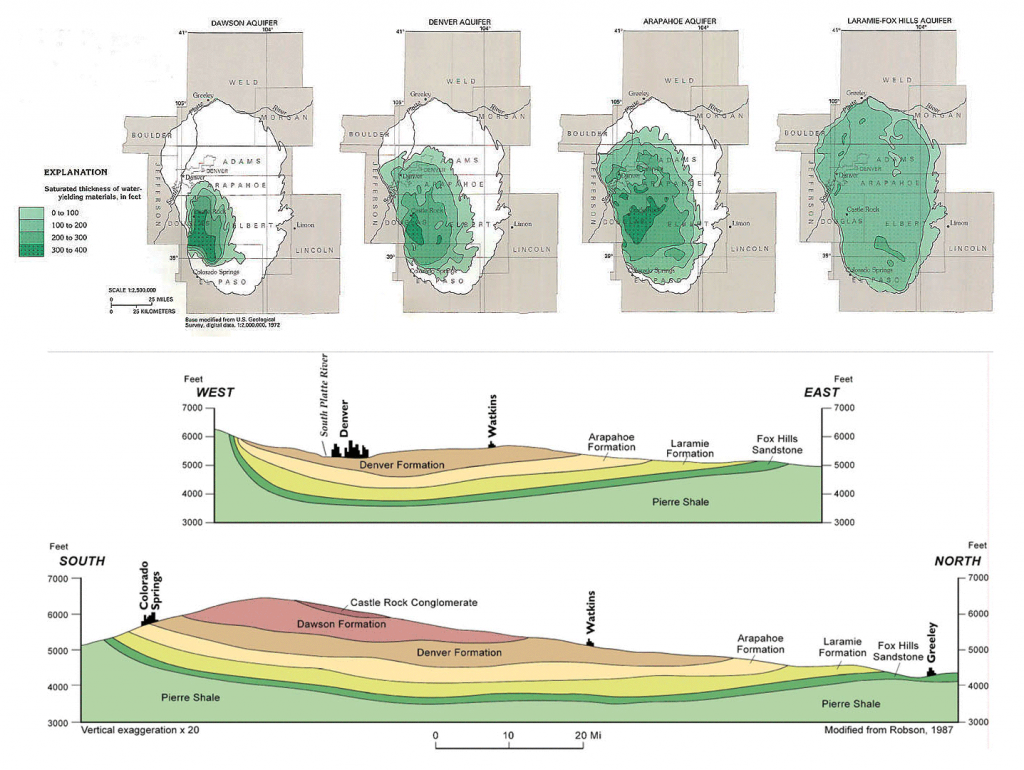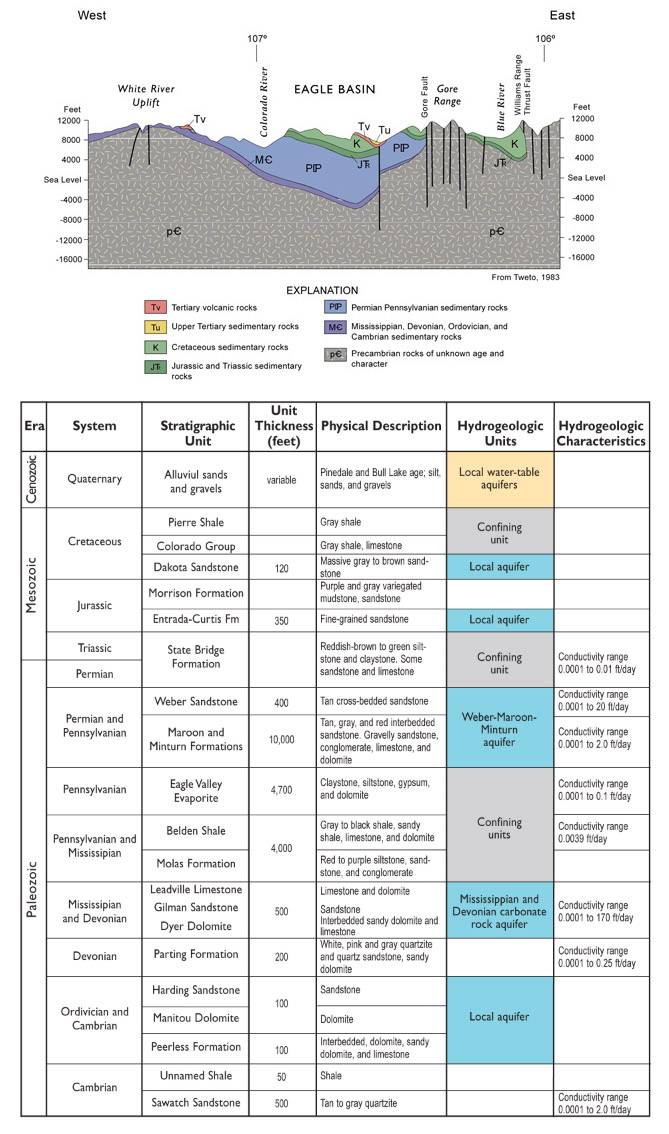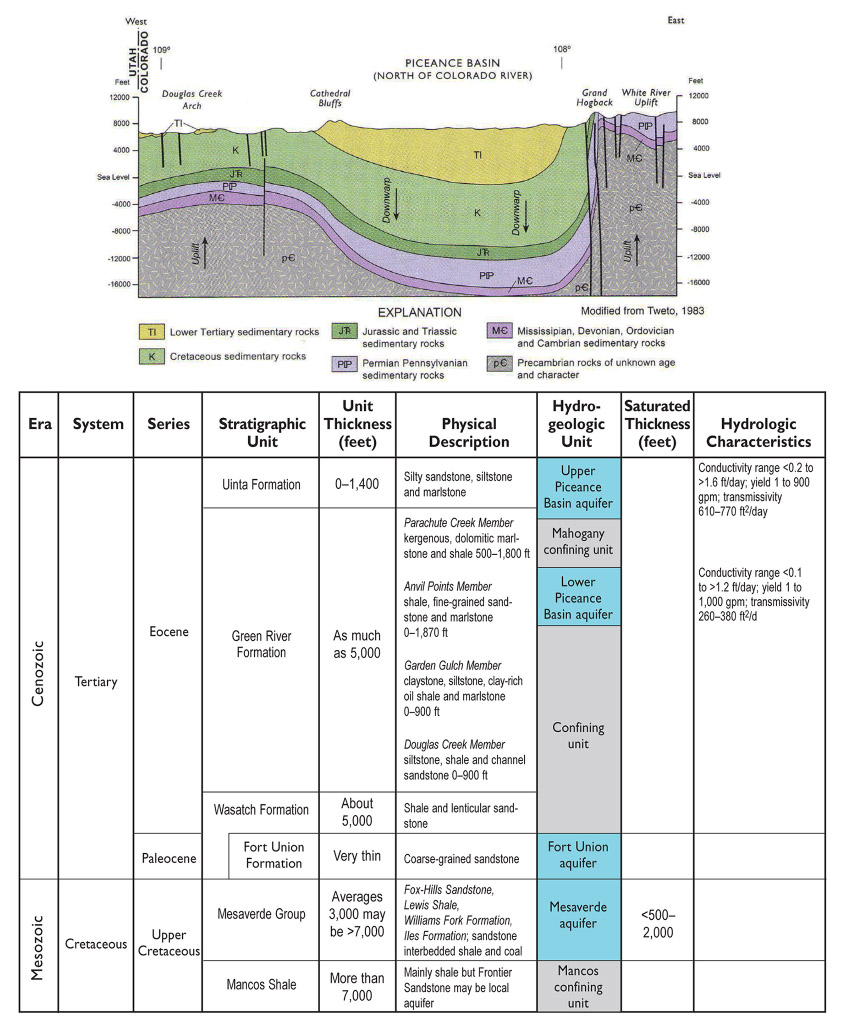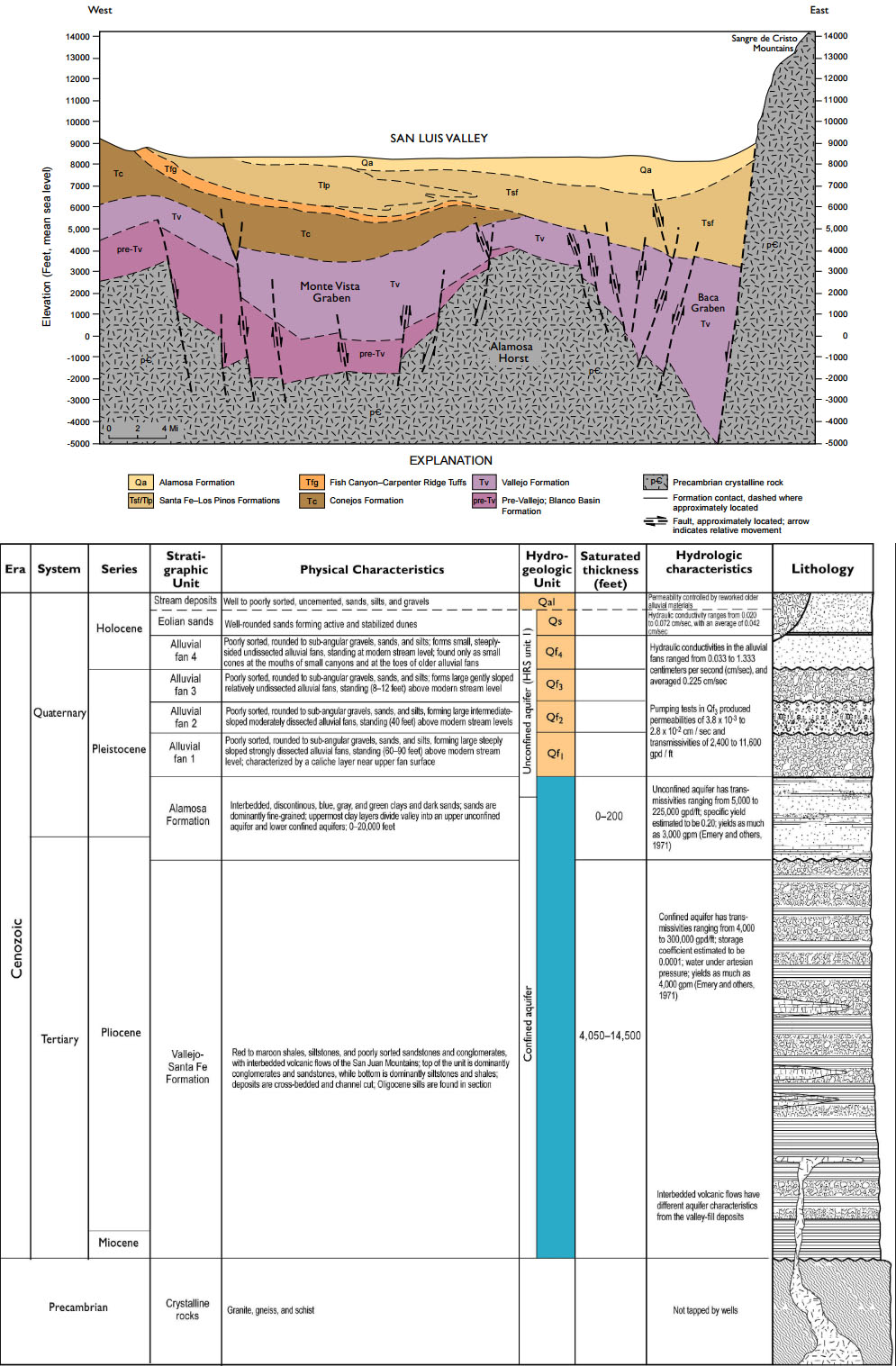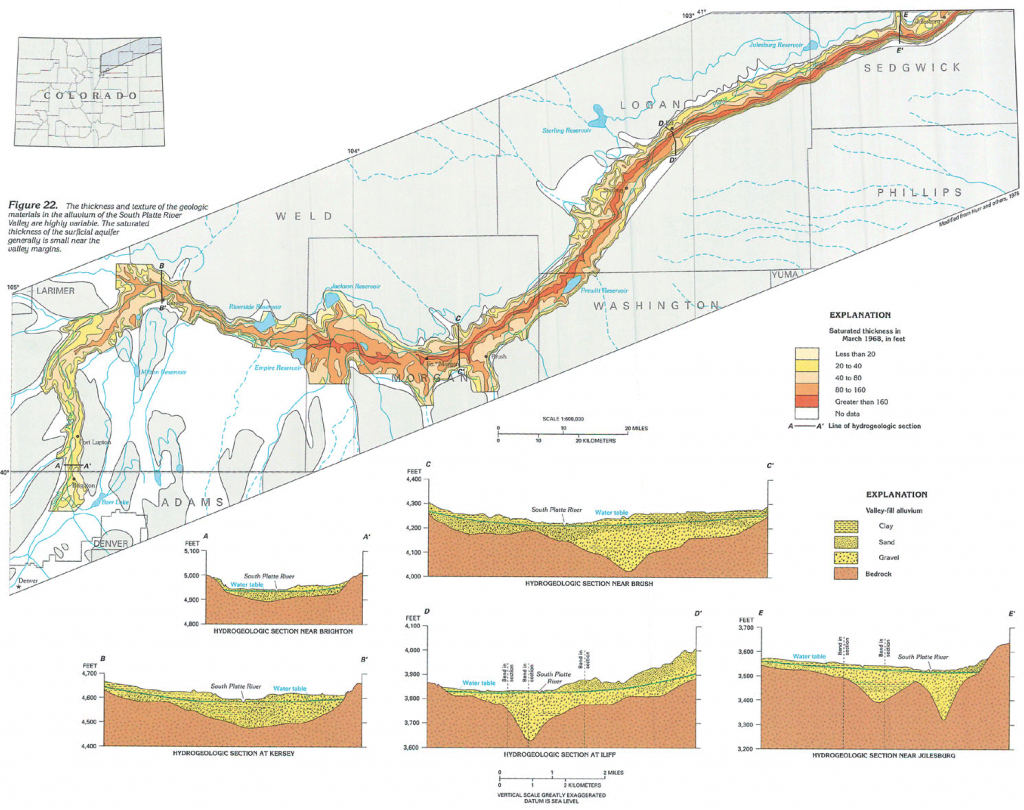Groundwater is the water found beneath the Earth’s surface and occupies the very small cracks and spaces between rocks, gravel and sand. It is a common misconception that groundwater is in the form of underground lakes, streams and rivers, when in reality, groundwater is found inside rocks: in the small pore spaces between rock grains in sedimentary rocks, between sand and gravel particles in alluvial deposits, or in narrow fractures and faults in crystalline rocks (Water Education Colorado [WEco], 2005, 2007; Colorado Geological Survey [CGS], 2002, 2003).
Groundwater supplies are available throughout much of Colorado; however, while most of state’s surface water resources are found west of the Continental Divide, most of the state’s groundwater resources lie to the east of the Divide (Grigg, 2003; Pearl, 1980). Of Colorado’s 64 counties, 19 rely heavily on the state’s groundwater resources, with private wells and public water supply systems serving approximately 20% of the population. (CGS, n.d., 2002; State of Colorado, 2015). Agriculture also heavily relies on groundwater, mainly for irrigation, but also for livestock and rural domestic needs (CGS, n.d.).

